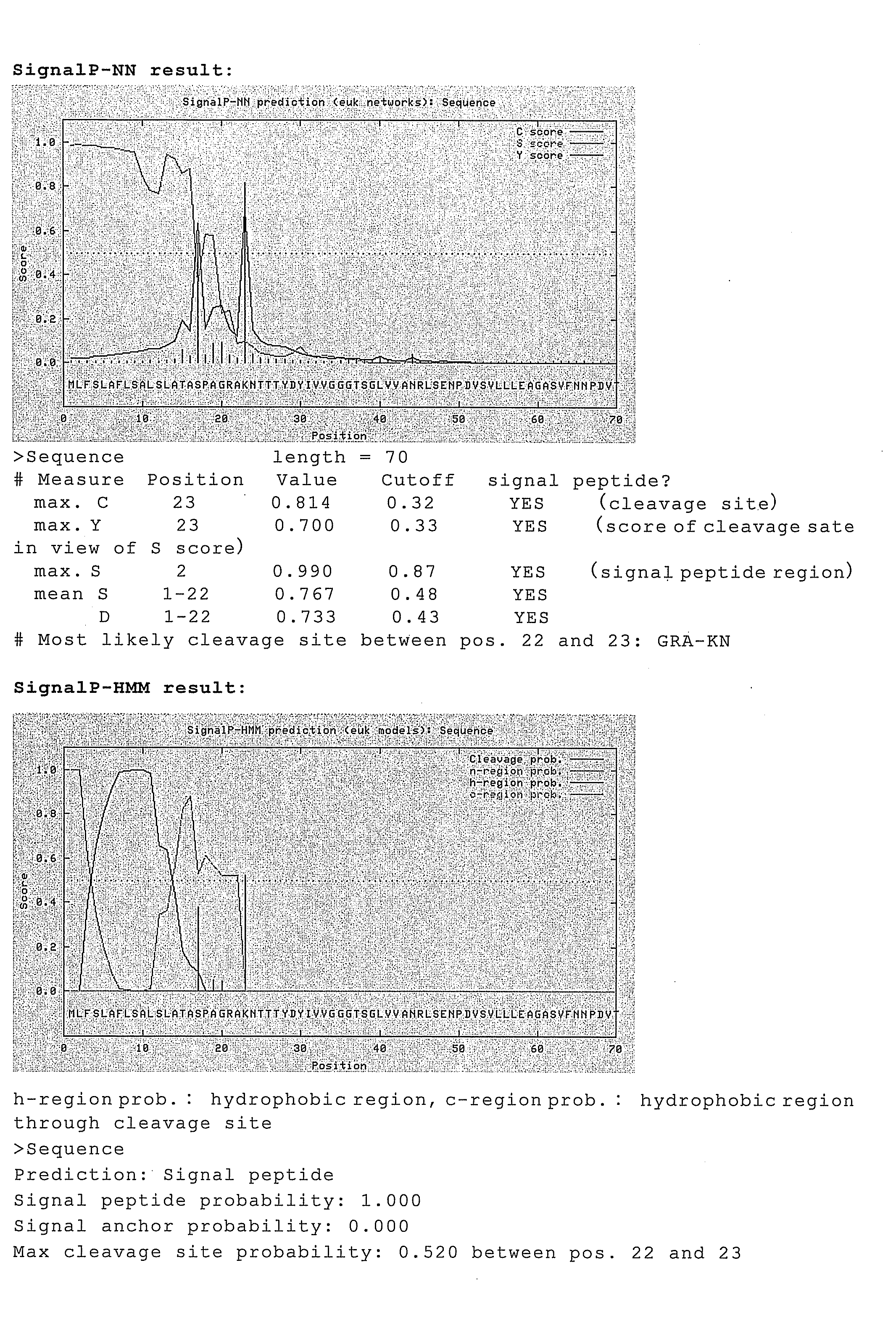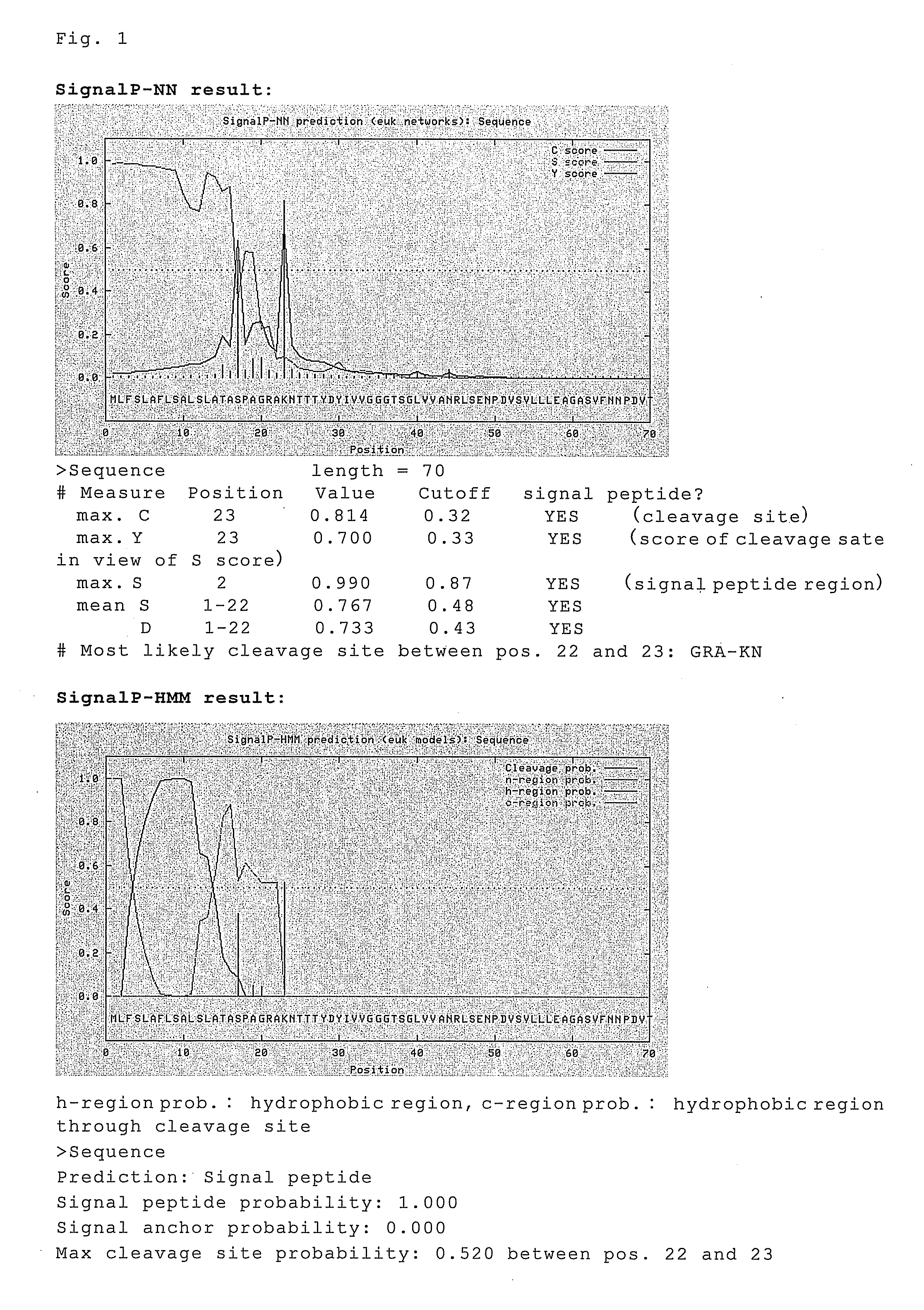Method for highly expressing recombinant glucose dehydrogenase derived from filamentous bacterium
a technology of recombinant glucose and filamentous fungi, which is applied in the field of high-expressing recombinant glucose dehydrogenase derived from filamentous fungi, can solve the problems of impaired correctness of measured value, poor stability of nad(p)-dependent glucose dehydrogenase, and dissolved oxygen affecting the measured value, etc., to achieve more practical glucose dehydrogenase, efficient production of glucose dehydrogenas
- Summary
- Abstract
- Description
- Claims
- Application Information
AI Technical Summary
Benefits of technology
Problems solved by technology
Method used
Image
Examples
example 1
Introduction of Glucose Dehydrogenase Gene Derived from Aspergillus oryzae (Hereinafter Sometimes Referred to as “AOGDH”) into Escherichia coli
[0106] For the AOGDH gene, mRNA was prepared from Aspergillus oryzae microbial cells, and cDNA was synthesized. Two oligo DNA shown in SEQ ID NOS:5 and 6 were synthesized, and the AOGDH gene (wild type) was amplified using the prepared cDNA as the template and using KOD-Plus (supplied from Toyobo Co. Ltd.). The resulting DNA fragment was treated with NdeI and BamHI, and inserted into NdeI-BamHI sites in pBluescript (the NdeI site had been introduced to match a NdeI recognition sequence ATG to a translation initiation codon ATG of LacZ) to construct the recombinant plasmid. This plasmid was introduced into Competent High DH5α (supplied from Toyobo Co., Ltd.). The plasmid was extracted according to the standard method, and the base sequence of the AOGDH gene was determined (SEQ ID NO:3). The amino acid residues deduced from the DNA sequence w...
example 2
Introduction of Glucose Dehydrogenase Gene Derived from Aspergillus terreus (Hereinafter Abbreviated as ATGDH) into Escherichia coli
[0117] For the ATGDH gene, mRNA was prepared from microbial cells of Aspergillus terreus (deposit number NBRC33026 registered at Biological Resource Center, National Institute of Technology and Evaluation), and cDNA was synthesized. Two oligo DNA shown in SEQ ID NOS:13 and 14 were synthesized, and the ATGDH gene (gene sequence in which the predicted signal peptide sequence had been deleted) was amplified using the prepared cDNA as the template and using KOD-Plus (supplied from Toyobo Co., Ltd.). The resulting DNA fragment was treated with the restriction enzymes NdeI and BamHI, and inserted into NdeI-BamHI sites in pBluescript (the NdeI site had been introduced to match a NdeI recognition sequence ATG to a translation initiation codon ATG of LacZ) to construct the recombinant plasmid. This plasmid was introduced into Competent High DH5α (supplied from...
PUM
| Property | Measurement | Unit |
|---|---|---|
| heat resistance | aaaaa | aaaaa |
| OD | aaaaa | aaaaa |
| OD | aaaaa | aaaaa |
Abstract
Description
Claims
Application Information
 Login to View More
Login to View More - R&D
- Intellectual Property
- Life Sciences
- Materials
- Tech Scout
- Unparalleled Data Quality
- Higher Quality Content
- 60% Fewer Hallucinations
Browse by: Latest US Patents, China's latest patents, Technical Efficacy Thesaurus, Application Domain, Technology Topic, Popular Technical Reports.
© 2025 PatSnap. All rights reserved.Legal|Privacy policy|Modern Slavery Act Transparency Statement|Sitemap|About US| Contact US: help@patsnap.com



